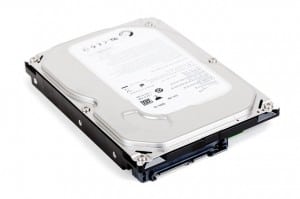
You are looking for the most efficient storage space. You know that Storage Area Networks (SANs) are one option, but they are not exactly the cheapest storage type money can buy. Is there a lower-cost alternative?
Yes. Network Area Storage (NAS) is another way to carve out some storage space, and it is measurably less expensive than its palindrome, SAN. We frequently advise our clients to consider an NAS as one piece of their IT storage solution.
The key word being piece. If you wanted to make a whole pie out of NAS storage, you might not like the taste. Here’s why.
Performance suffers in an NAS, and accessing data can take longer than companies expect or want. This is especially true for commonly used information, which can cause long wait times and erode business functionality. Our clients want the lowest cost possible, but they also want IT to work seamlessly.
NAS is an ideal targets for backups and archiving. Even though the drives are low speed, they get the job done. Whenever you need to retrieve a file from your backups, or an old email, the retrieval might take some more time than it would from a SAN, but the low frequency of retrieval does not slow down the business in a noticeable way.
In other words, we look at NAS as an extra-low tier in the storage solution. (Read our recent blog about IBM SANs and Easy Tier, a feature that automatically stores unused files in the cheapest storage drive and routes frequently accessed files in the sleekest, quickest drive on the shelf.)
We typically use Microsoft Distributed File System (DFS) to manage file storage in the NAS. DFS gives you an organized, manageable file structure at low cost. It does not have all of the sleek, enterprise-level functionality of an IBM SAN. Many of the organization needs to be conducted manually, but our clients have been quite happy with the decreased costs of the total solution.
Come back next time for the next chapter of the SAN versus NAS battle: how drive slots influence performance.
Call our business managed IT services department directly at (404) 777-0147 or simply fill out this form and we will get in touch with you to set up a getting-to-know-you introductory phone call.
Fill in our quick form
We'll schedule an introductory phone call
We'll take the time to listen and plan the next steps
11285 Elkins Rd Suite E1, Roswell, GA 30076
© Copyright 2024 Centerpoint IT. All Rights Reserved. Website in partnership with Tech Pro Marketing. | Privacy Policy
Get Immediate Help For All Your Technology Issues (404) 777-0147

If you want our team at Centerpoint IT to help you with all or any part of your business IT, cybersecurity, or telephone services, just book a call.
Fill in your information below to get started today.
"*" indicates required fields
Fill in your information below to schedule now.
"*" indicates required fields
Before your organization commits to 1, 2, 3 or even longer managed IT services contract, understand what you’re getting. Centerpoint IT gives you the facts in our Managed IT Services Buyer’s Guide.
Enter your information below and we’ll send it over.
"*" indicates required fields

We are turning 15 and want to celebrate this milestone with you because without you this would not have been possible. Throughout this year look for special promotions on services and tools aimed at Making IT Simple for You so you can focus on your business.

We are turning 15 and want to celebrate this milestone with you because without you this would not have been possible. Throughout this year look for special promotions on services and tools aimed at Making IT Simple for You so you can focus on your business.
https://calendly.com/centerpoint-it/discovery-call